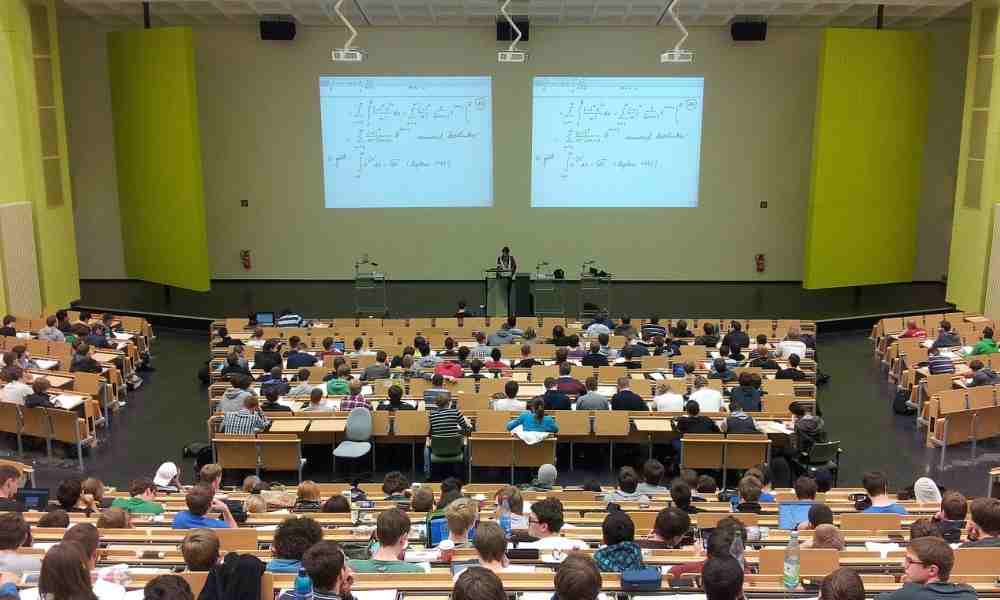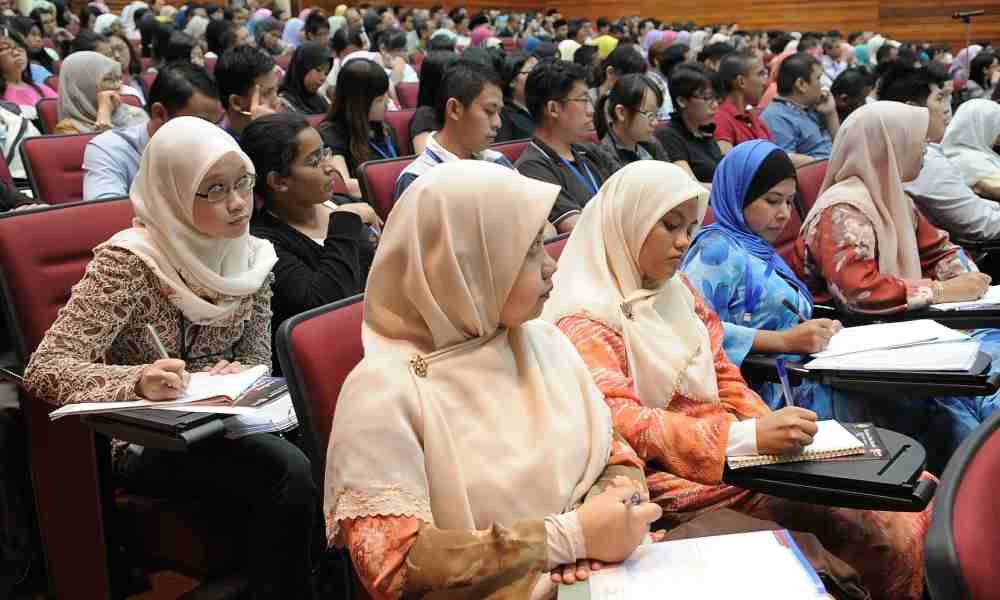US varsities more popular than ever, but are they worth it?

Afterschool Team
September 19, 2016
The number of international students heading for a US education has been growing since 2001. The growth is unprecedented as the number of international students in the US reached nearly 1 million as of 2015, a 67% growth between the two years.
According to statistics published by Forbes in collaboration with Dr Rahul Choudaha (AKA Dr Education), international students from 10 countries are topping the charts: China, India, S. Korea, Saudi Arabia, Canada, Brazil, Taiwan, Japan, Vietnam and Mexico.
International students numbers from five countries, China, India, Saudi Arabia, Brazil, and Vietnam have risen to more than 100%.
Students from China, Vietnam and India are coming to the US at higher rates due to the economic growth and a larger of middle class in these countries. GDP indicators show a growth of 311%, 172% and 154% respectively.
On the other hand, students from both Saudi Arabia and Brazil are flocking to US universities due to government scholarships and scientific collaborations. Brazil's (Scientific Mobility Program) provided scholarships to undergraduates and postgraduates students to study science, technology, engineering and mathematics, while Saudi Arabian students are heading to the US under King Abdullah Scholarship Programme which was established in 2005. However, the recent economic downturn and the drop of oil prices are forcing a decline in the number of students. These programmes are not sponsoring as many students as expected and are surrounded by speculations about their longevity.
Universities in the US with the most number of international students are selected partly because of ranking and their prestigious status. The top 10 institutions with the most international students are Michigan State University, University of Washington, Purdue University - West Lafayette, University of South California, Colombia University, University of Illinois, University of California - LA, New York University, Northeastern University and Arizona State University.
These institutions have already been attracting large number of international students. However, prior to and throughout the years 2001/02, there were less than 10,000 students at each university. By 2015, 8 of these universities have recorded more than 10,000 students in their campuses.
The highlight of the statistics are as follows:
- Arizona State University, Northeastern University and the University of California, Los Angeles–expanded international enrolment by more than 200 percent.
- The University of Southern California was the leading institution in 2001/02 and second in 2014/15, but it grew the slowest among the top-10 institutions (107%).
- Arizona State University added the highest number of international students in terms of absolute growth (7,982).
What makes US education so attractive?
Well, it is no secret that the cost of study and living in the US is considered to be one of the highest in the world. But why is it still attractive to students? There are many reasons the US has to offer in terms of attracting students like immigration opportunities, quality of education and research, unique study experience, the US has some of the best universities in the world, hands on learning, and a US certificate is a valuable asset for its holder, to name few.
Many international students unable to study in the US, not because they don’t qualify, but because of the cost of education. In fact, many international students are even better performers than their US peers.
Fees in the US are high. As of January 2016, fees are considered a major burden that American students have to bear. American students are struggling with study loans and problems associated with unemployment and minimum wages further add to an already complicated situation.
Many Ivy League universities charge undergraduate students between US$40,000 - US$50,000 (RM165,042 - RM206,302) per year, and for postgraduates, the cost is between $38,000 - $50,000 per year depending on the programme.
An education at an Ivy League university can cost a Malaysian student nearly RM1 million for a 4 or 5 years degree.
According to QS Top Universities data, average tuition fees only (not including cost of living) in US non Ivy League universities for international students range from $30,000 - $45,000 (RM123,781 - RM185,672) annually depending on the programme and level of education. These aren't small numbers. Most working in adults in Malaysia make half of this amount a year.
Immigration and study visa
Study visa regulations are extremely rigorous and may take up to three months if students are self-sponsored. However, the situation is different for those on government or corporate scholarships.
F1 and M1 student visa can be issued as early as 120 days in advance, before the date of attending classes. However, students may enter the US within 30 days before their semester starts, not longer.
This is a non-immigrant visa and is dedicated solely for academic purposes. Students are required to attend an interview to assess their eligibility and for security reasons. The Department of State will seek the corresponding university's assistance and cooperation in the final decision.
Scam Universities
Like most countries that attract international students, there will be syndicates who operate under the premises of exploiting the popular demand of study visa. Many of these syndicates establish bogus universities or work as agents to trick students into signing up with them and charge large amounts of money to "facilitate" admission and visa processes.
Some of these scam artists are even capable of getting students into the US. However, the associated risks are enormous, especially for students who really want to get an education. The problem is that these people feed off of desperate students and those who have not done their homework and research properly.
However, if students stick to formal channels, conduct proper research, seek admission with well recognised institutions and keep in touch with US authorities, they are unlikely to be cheated or scammed.
The Department of Homeland Security has been setting up "phantom universities" to attract many of these syndicates and pursue legal action. Earlier this year, USA Today reported the arrest of 21 individuals in cases associated with fraudulent practices and bogus visa cases.
Should Malaysians consider a US education?
The short answer is an astounding yes, but hold the excitement and let's examine the situation logically. First, get the facts straight. Not all degrees are equal and as valuable as often thought. The value of a degree is assessed by the person holding that degree and the skills and qualities he/she possesses and can offer employers. However, the following reasons can give a better when considering a US tertiary education:
1. Added value to employers
As mentioned earlier, not all degrees are equal. But a degree from a renowned US institution is valuable to employers as it showcases the holder's potential to thrive in the workforce. But employers won't make their hiring decision based solely on academic qualifications.
2. Unique study experience and culture
The United States of America doesn't offer the education package only, students will be engaged in activities that would enrich their experience and help build character. Students will definitely learn more due to the conducive learning environment that encourages debate culture, questioning authority figures and promote critical thinking.
The problem is, it highly depends on the students themselves. Some students choose to isolate themselves for many reasons that can be associated with any part of their culture or lifestyle in their country of origin.
For instance, some Saudi students do take full advantage of their generous scholarships in ways that will not benefit their future options. Many students have reported poor command of the English language and inability to function effectively in groups. Cases like this are also exhibited among Malaysian students.
3. Industrial research, training and internship programmes
Students in the US have the opportunity to make their mark and contribute to industrial research, which would add a tremendous value to their resumes and employability chances. Additionally, training and internships are open for those who truly seek such opportunities.
4. Science and Technology
There is no denying the fact that American institutions have contributed to the world of modern science in ways no other institutions have ever contributed. However, other countries like China, India, South Korea and Japan are rising to the occasion and are actively competing with American universities.
Moreover, American universities depend on highly talented international students to get that reputation and produce this result. Interestingly, many of these talents are leaving the US to contribute to their respective countries' advancements and developments.
Is it worth it?
Academic vigour and sound financial capabilities make this option worth the trouble and the cost. Alternatively, Malaysia is getting closer to offering American tertiary education locally.
American universities have not yet established any branch campuses in Malaysia. However, the interest to explore Malaysia's market is prevalent when examining the collaboration that public and private institutions in Malaysia have with US universities and other American higher learning institutions.
Many private universities in Malaysia work closely with American universities offering American degrees and paving the path for students who wish to continue studying in the US. Malaysian private universities have introduced joint courses and fully fledged American programmes for students who cannot afford to study in the US. This is another option worth exploring.





